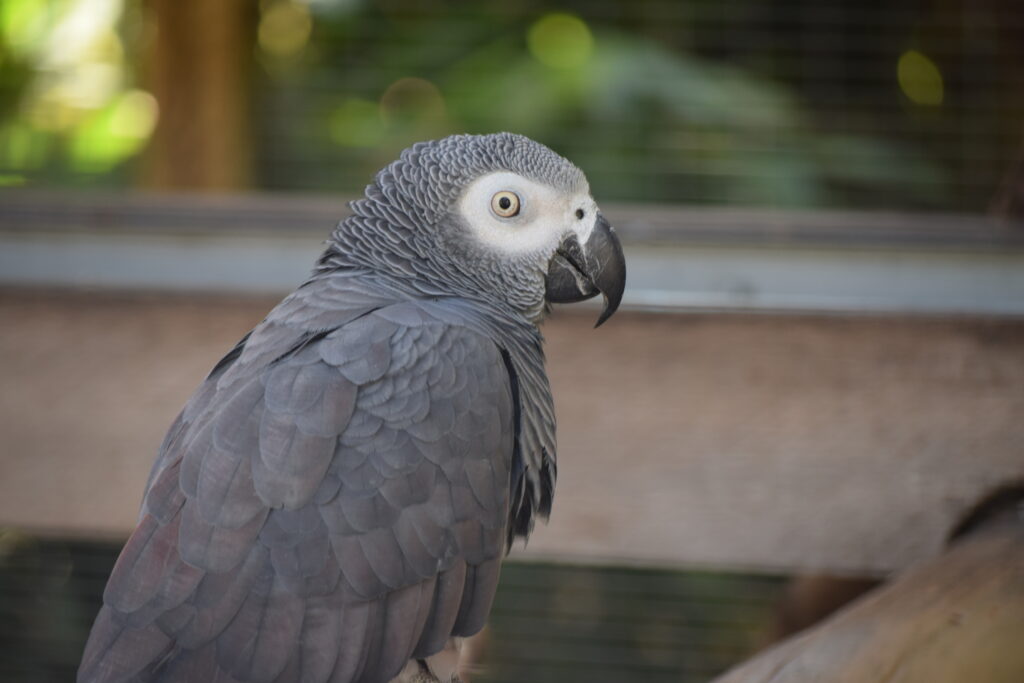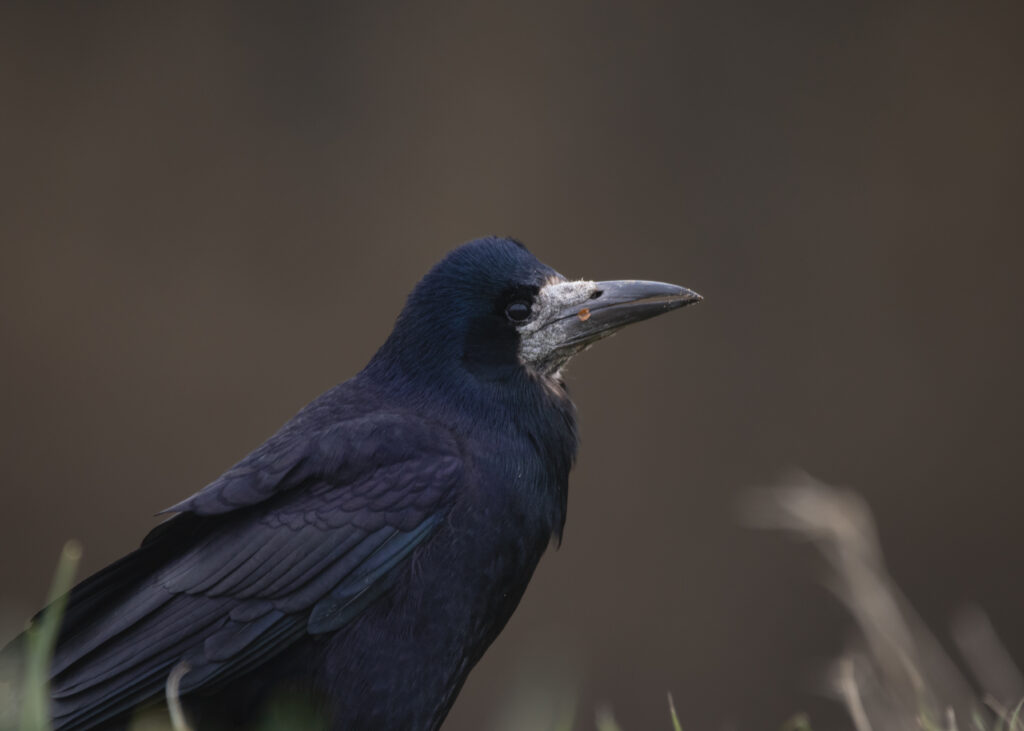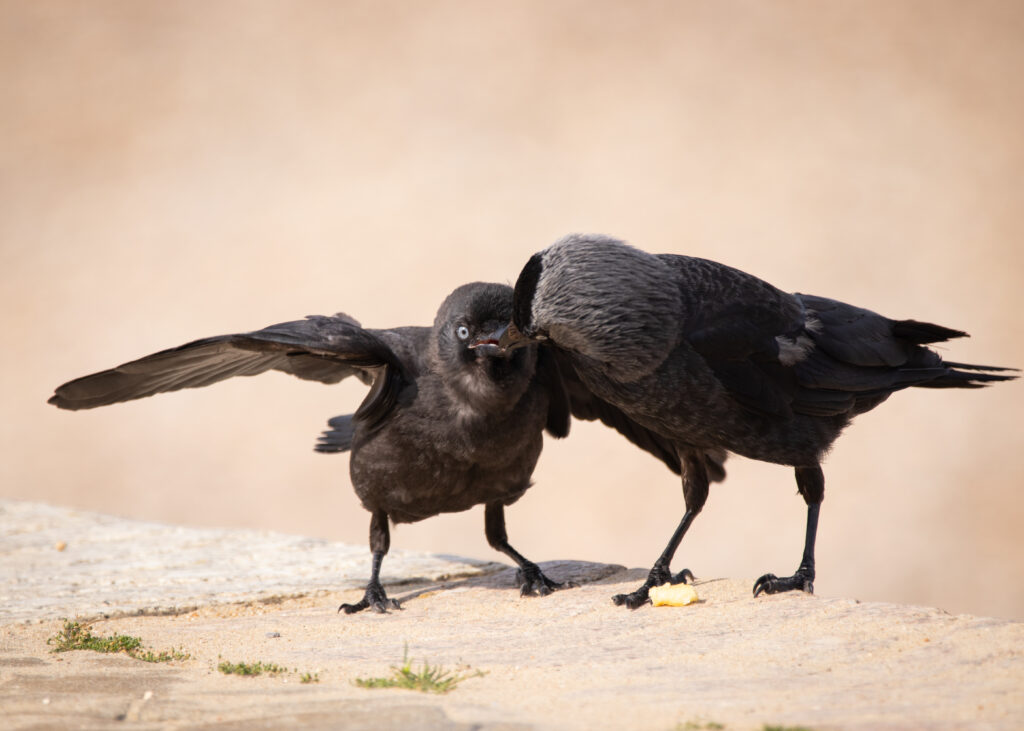As Deputy Head of Birds, I often get asked what my favourite group of birds is to work with. There are always two answers. My brain says parrots, a very sensible choice. Intelligent, funny and a little bit naughty sometimes, they are everything that I look for in a bird. However, my heart, as all hearts do, wants something that Wingham currently doesn’t have in our collection, Corvids. Arguably just as intelligent, if not more so, just as funny and unfortunately due to past experiences, I can confirm they can be even naughtier. They are the perfect birds!


Misconceptions
Other than maybe the gull family (Laridae), I have never seen a group of birds so persecuted and horribly misconceived. They often get tarred with horrible brushes, the most horrific being murderous. Even scientists give this notion weight due to labelling a group of crows as a murder.
This conception of corvids being blood thirsty savages stems from the fact that they’re opportunistic omnivores. If they get a chance to secure some protein, then they will. I myself would get distressed watching a magpie (Pica pica) dispatch a baby robin or a raven (Corvus corax) plucking at an abandoned newborn lamb, however, I do not let this rule my opinion. I am not heartless (despite what half the bird team say!), it is simply due to the fact that the “game’s the game”. Speaking of games, the magpies scientific name is a Pokémon player’s dream.

Omnivores
Red squirrels
Red squirrels (Sciurus vulgaris), the sweet yet nutty poster child of British wildlife conservation. Their decline coupled with their cute looks has led to them being perceived as innocent creatures that can do no wrong. What’s their favourite food? Nope, not nuts but baby birds. Red squirrels are also omnivorous and love nothing more than to raid a nest full of little babies.
Hedgehogs
Hedgehogs, keeping British children road savvy for decades, how can I ruin them for you as well? Bird nests and rodents’ nests, hedgehogs actively will seek out a mice nest or the ground nest of a bird in order to raid it. In fact, they are arguably worse than corvids!
The European hedgehog (Erinaceus europaeus) is not native to some offshore British islands such as the Orkneys for example. However, being introduced there by humans in order to control the slug population on these islands, they have wreaked havoc on the wading bird populations there. It is thought that up to 50% of all reproduction failures in these birds are due to hedgehogs directly. Our domestic cats (Felis catus) kill hundreds of millions of animals every year in Britain alone, despite us feeding them.
Survival of the fittest
The point I am trying to get at here is that the natural world, despite all of its beauty, is a dark and unforgiven place where only the strongest survive. As a result, corvids should not be persecuted for something that most animals do.
Corvids
Corvids often get used in horror movies, books and other forms to help add to the creepiness of the setting. Often depicted being active at night in a graveyard or something similar, despite being diurnal/active during the day, the caw of a lone crow or the quoth of a raven helps keep the viewer or reader on edge. Why are they used in this way? Maybe it is linked to my earlier point. However, I believe it is due to how good humans are at being shallow and judging things based on their appearance.
Colour
Obviously being mostly black in colour at first glance helps them fit in with the theme of a horror setting. Hence why the nickname “goth chicken” makes me chuckle. If you look at a carrion crow (Corvus corone), rook (Corvus frugilegus) or even a magpie in certain lights, you will see far more than just the colour black. You will see subtle shades of iridescent purple and green which would only be more apparent in the sun’s light. In fact, the birds of paradise are closely related to the corvid family!


Parenting and forming bonds
Both the earlier points suggest that corvids are seen as nothing short of evil. Ever since I was around 13 years old, I grew up with a crow my dad rescued that could not be released back into the wild. I can assure any corvid hater that they have far more of our good anthropomorphic qualities than we give them credit for.

Like most birds, they are monogamous, often pairing for a lifetime. They form incredibly strong bonds with their partners. Not just forming strong bonds with their partner but also their offspring. They are amazingly protective parents, often chasing away birds of prey twice or even three times their size, in order to protect their young. They also are well known for tolerating their offspring to stay with them for years after fledging, that is how strong these bonds are.
Intelligence
Their intelligence is probably the most impressive and human like, apart from great apes, out of any group of animals I know. Brandy, my crow sister from another mister, is so intelligent that she has mastered the art of bartering.
She enjoys a lot of free flying and time out of her aviary but that still doesn’t stop her from trying to bribe anyone to let her out early. Despite her having pair bonded with my dad; she would still call me over when I walked past her aviary to present me with a gift. These gifts ranged from a feather, to sticks, stones and even food. All in an attempt to barter for an early excursion.
Speaking of pair bonding with my dad, despite this obviously being one of the issues why she cannot be released back into the wild, a covid bond is nothing but beautiful. She will often dance for him, in an attempt to woo him and to reaffirm their bond.
Examples
Wild corvids also display super-bird intelligence! Many carrion crows, rooks and western jackdaws (Coloeus monedula) are seen using traffic lights to navigate across busy roads!

New Caledonian crows have been documented to not only use tools but to also create/modify them. Tool customization is a very elite club to belong to too. I highly recommend looking up the New Caledonian crow (Corvus moneduloides) solving puzzles in captivity. There are clips of them in the wild making these tools!
Importance
The Corvidae family are a family of 135 glorious species that fill a vital role in our food chains. They are prey, predators, feeding on carrion to stop the spread of disease and seed dispersal. Our planet will be 100% worse off without them.


